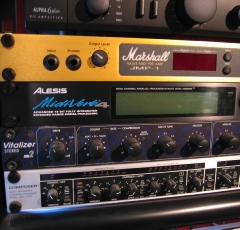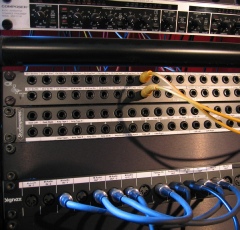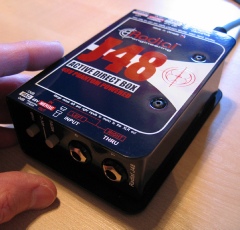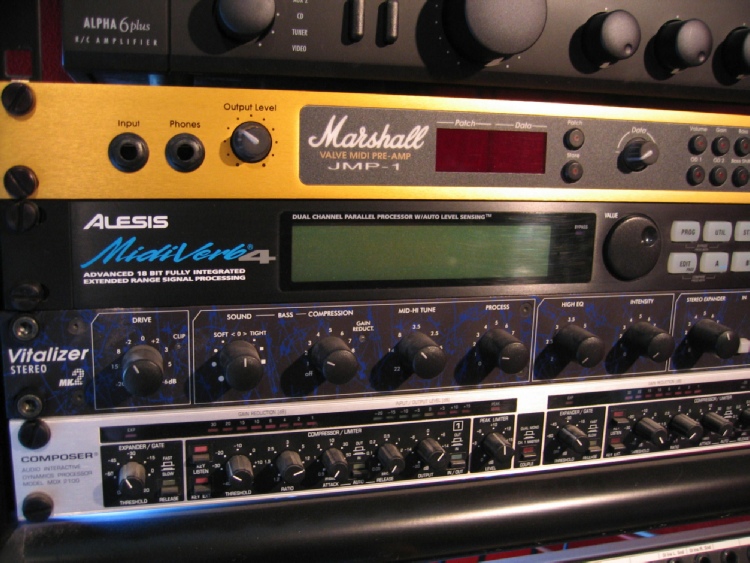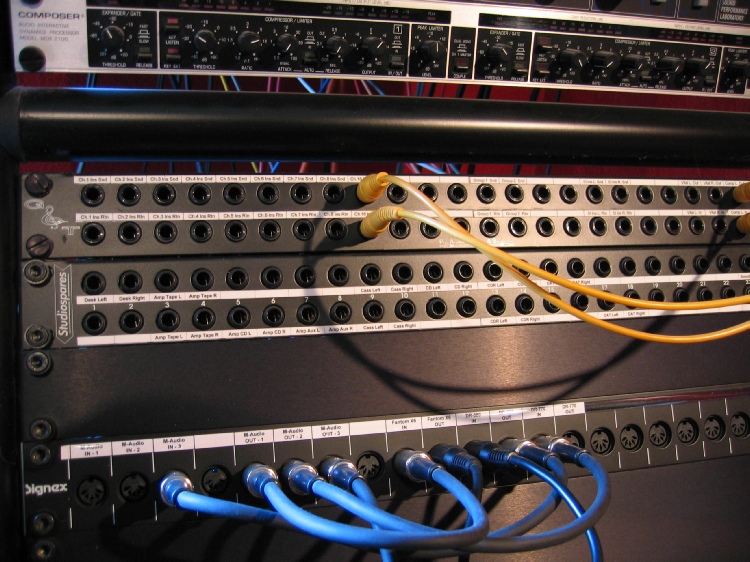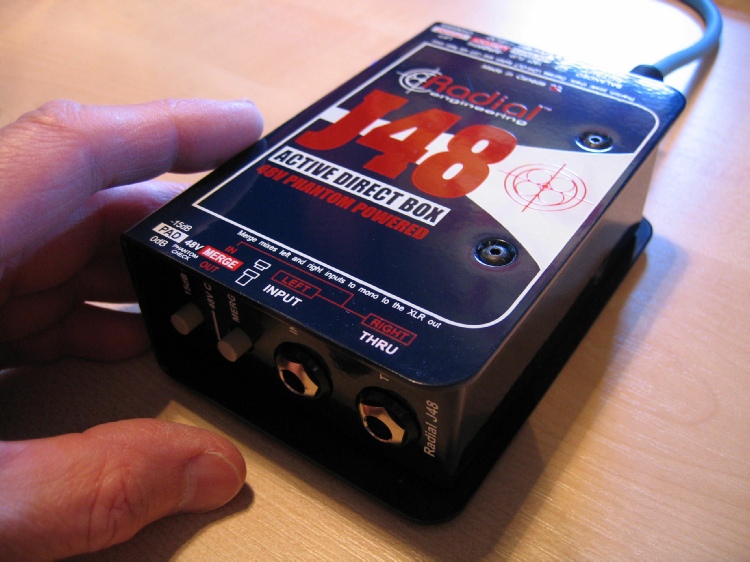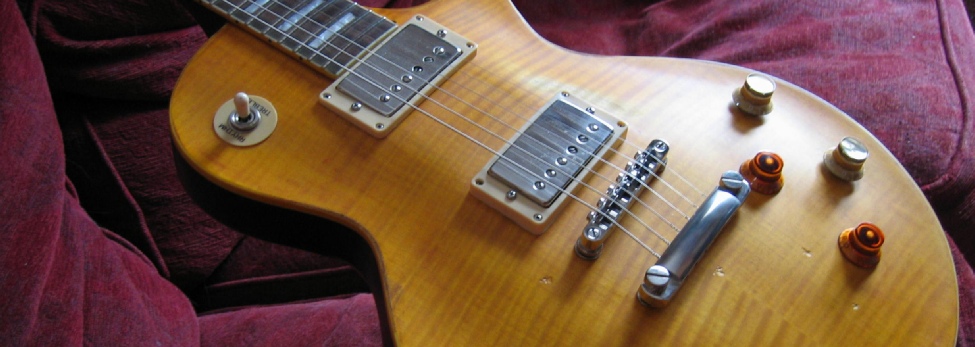






DI Box: If you’re a guitarist you’re going to want to plug your guitar into your PC somehow and record it. Due to things like ‘mismatched impedances’ this isn’t straightforward. You’re going to need a pre-amp as they’re called, or a guitar processing unit with built in pre-amp like a Zoom, BOSS or similar that has outputs provided especially to feed the correct signal levels into a DAW. I often use the guitar processor in my BOSS DR-880 drum machine (mentioned on the previous page), or my rack-mounted Marshall JMP-1 pre-amp (see top photo right). Alternatively you can buy a DI (Direct Input) box that is specially built to take signals from your guitar straight into a mixing desk (middle photo left).
Outboard - what is it and do I need it? Recording can now be conducted almost entirely inside a computer. Equipment formally residing in aluminium 19” rack boxes containing circuit boards has been emulated in software form instead so the same effects can be plugged in to your DAW software. Thanks to agreement on common industry standards such as VST and Direct X, this ‘plugin’ market is now huge, with the same plugins usually compatible with all makes of DAW software, and low in price.
Home studios rarely have outboard equipment, but if you see inside a professional recording studio it will invariably have rack upon rack of hardware. Why is this? There is still a market for very high end professional equipment, almost all hand-built to extremely high specifications, and performing specialised functions that professional studios need to produce their projects to world standards. Lesser mortals like us, without the ‘golden ears’ of pro engineers, wouldn’t be able to detect the intricate sonic work that this equipment performs in the sound engineering process, our studios won’t need this kind of perfection as the cost versus benefit ratio wouldn’t make sense.
In addition, many professional studios still use famous outboard processors, particularly compressors for example, that were used to make hit records in the 60s or 70s and which are no longer available. Even some of these famous processors have been emulated in software form, but those who are lucky enough to own them still prefer the ‘mojo’ of the originals!
I have a rack (see photos right) but it dates back to when I started home recording a dozen years ago. It contains a Behringer compressor, Alesis reverb unit and an SPL Vitalizer, all of which can be bought these days as plugins. I use the compressor and reverb unit when tracking up vocals: the compressed signal gets printed (i.e. recorded) but the reverb doesn’t and is only there to help the vocalist with some ‘ambience’ in their headphones when recording.
Time for a reality check! You can have access nowadays to low cost, highly sophisticated and easy to use recording tools that Joe Meek and other early pioneers could never have imagined in their wildest dreams, and yet they produced amazing hit records that can’t be improved upon, and have already lasted half a century. Focus mostly on your art and not your kit!
Patchbays - do I need them? Only if you have a mixing desk, generally. Patchbays avoid having to constantly swap and re-plug cables in order to send and receive signals between studio components. The inputs and outputs are all cabled to the back of the patchbay and you can then connect these on the front of the patchbay in useful permutations as needed using short patch cables. I have a rarely used signals patchbay (see photos left) but also a MIDI patchbay which I use quite often, to send MIDI data and synchronisation between my PC, drum machines and Roland Fantom X6 synthesiser.

